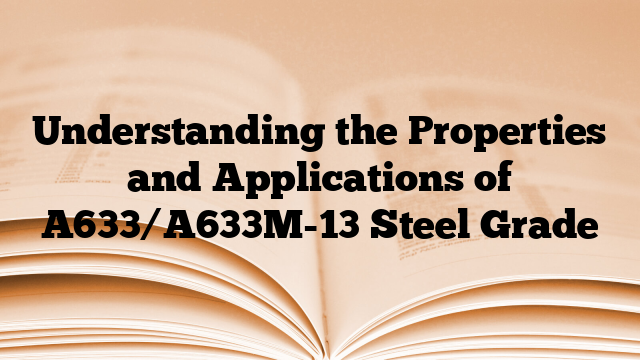The A633/A633M-13 steel grade is a specification for normalized high-strength low-alloy structural steel plates. This steel grade is commonly used in construction and manufacturing applications due to its excellent strength-to-weight ratio and weldability.
The chemical composition of A633/A633M-13 steel grade includes elements such as carbon, manganese, phosphorus, sulfur, silicon, copper, nickel, chromium, molybdenum, and vanadium. These elements contribute to the steel’s overall strength and mechanical properties.
The mechanical properties of A633/A633M-13 steel grade include yield strength, tensile strength, elongation, and impact toughness. The minimum yield strength of this steel grade is 315 MPa (45 ksi), while the minimum tensile strength is 485-620 MPa (70-90 ksi). The elongation requirement for this steel grade is 23%.
A633/A633M-13 steel grade offers good weldability, making it suitable for various welding applications. It can be welded using common welding methods, such as arc welding, gas welding, and resistance welding. This steel grade also exhibits good cold forming and hot forming properties, allowing it to be shaped into different structural components.
The application of A633/A633M-13 steel grade is widespread in various industries. It is commonly used in construction projects, such as bridges, buildings, and offshore structures, where high strength is required. This steel grade is also used in manufacturing heavy machinery, such as cranes, mining equipment, and agricultural machinery.
Overall, the A633/A633M-13 steel grade is a versatile and reliable material that offers excellent mechanical properties and weldability. Its wide range of applications and ease of fabrication make it a popular choice in the construction and manufacturing industries.

